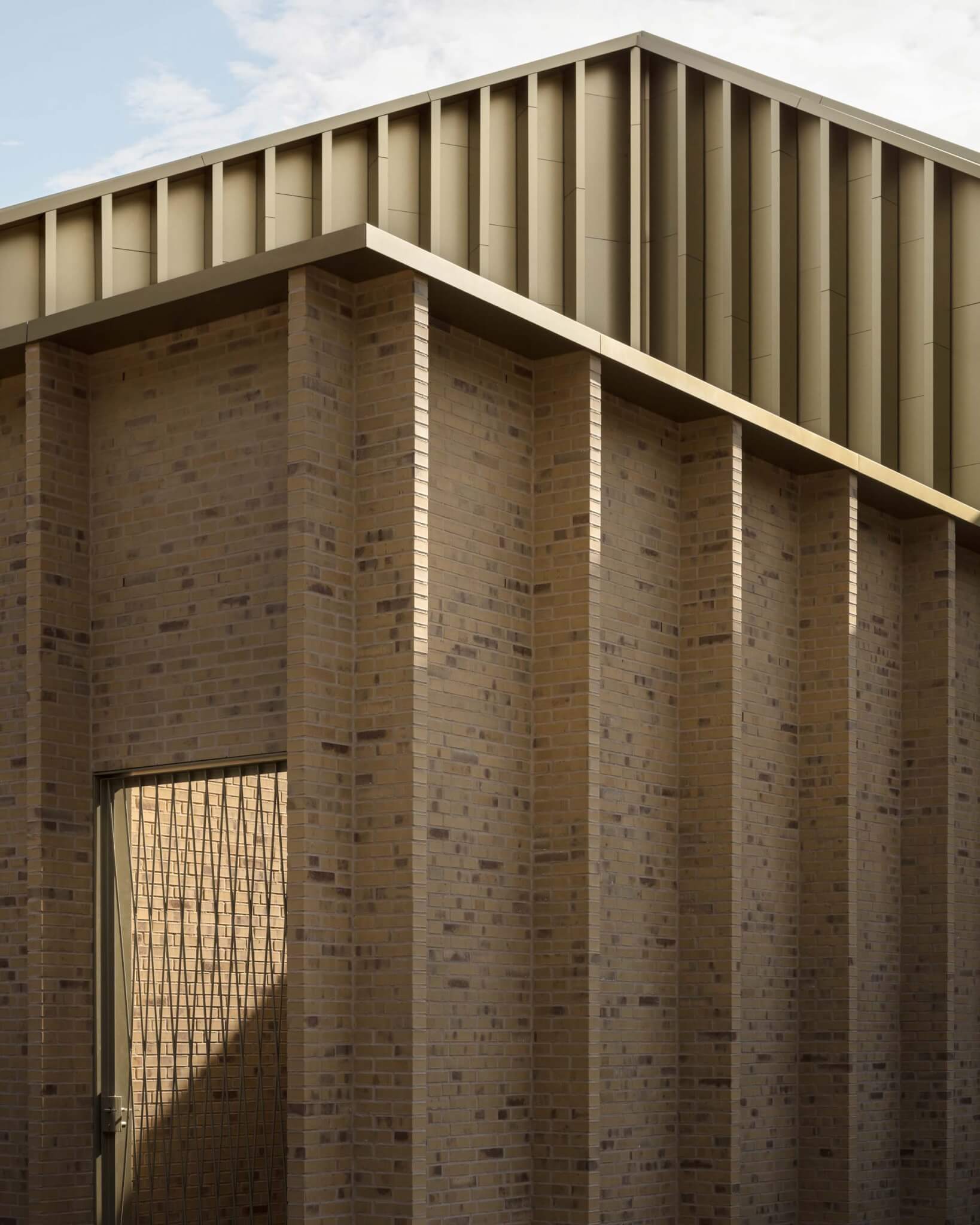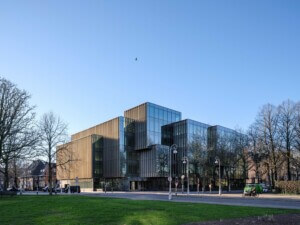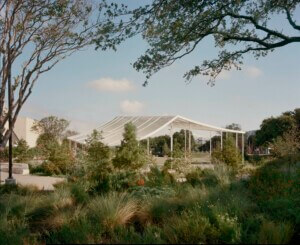In 2012, the Hoge Veluwe National Park, the largest nature reserve in the Netherlands, launched a competition for the design of the park’s new visitor center. The brief contained a surprising stipulation: Architects were kindly advised not to submit structures clad in wood. To many this must have been strange, since a facade mirroring the eco-identity of the building’s context, possibly even sourcing timber from the immediate vicinity of the building site, seemed to make a lot of sense. Yet that very environment was the reason for the provision: Previous wooden structures had deteriorated quickly in the park’s humid forests and required a large amount of maintenance to be kept free of moss and algae. The client, driven by a pragmatism often found in those whose relationship with nature extends beyond the romantic, simply wished to avoid costly upkeep of the structure intended to be the last one built within the park for the next 50 years.
Unsurprisingly the winning design, a submission titled Park Pavilion and designed jointly by Dutch offices Monadnock and De Zwarte Hond, does not have a wooden facade. Instead, the exterior, a dynamic composition that succeeds in making the building appear smaller than its actual size (about 35,000 square feet), features light yellow bricks and gold-colored aluminum mullions that make it stand out from its green surroundings. The clear separation of building and nature mirrors two notable predecessors located nearby: a hunting lodge designed by Hendrik Berlage and the renowned Kröller-Müller museum by Henry van der Velde. All three buildings utilize a contrast in materiality and geometry to carve a sanctuary out of the wilderness. Further, all three also evoke an interpretation of sustainability that favors durability over renewability.

Now, three years after construction has finished and about a decade after the design competition was announced, Park Pavilion serves as a case study about the shifting tone of the debate around sustainability and ecology. Enough time went by between conception and inauguration for opinions to significantly change: Do we consider what seemed acceptable and sensible in 2013—a building made of brick and aluminum inside a nature reserve—to still be so in 2023?

Perhaps not, Job Floris, cofounder of Monadnock, told AN: Today, both client and designer would probably push for a more conspicuously nature-inclusive approach. However, he adds, that push would reflect not only an advanced understanding of the impact of buildings on the environment but a change in taste as well: Buildings that wear their modest carbon footprint on their sleeve are en vogue at the moment.
As an example, consider the resurgence of interest in using stone in construction, as explored in The New Stone Age, a 2020 exhibition curated by the London-based office Groupwork. The embodied carbon of a load-bearing superstructure in natural stone, the show claimed, is as much as 90 percent lower when compared with steel or concrete alternatives, depending on the type of stone and the distance it needs to be transported. This means that, for instance, load-bearing stone facades might be the most sustainable option in some cases—especially if we make sure the buildings they support last a very long time.
There is an argument to be made that the popular definition of sustainable buildings— structures in cross-laminated timber, green roofs, certification systems based on more or less arbitrary calculation methods—has become so narrow that it hampers thorough reflection on what sustainable architecture actually is or should be. This results in missed opportunities, Floris argues: To properly evaluate buildings, the conversation must include topics like usability, durability, and lovability, as those aspects significantly affect the environmental impact of a building over its life span. This observation puts a lot of responsibility back where it arguably belongs: in the actual design of a building. In the end, it’s up to the architect to make materials sustainable by assembling them into good buildings. Whatever that means, exactly, depends to a great degree on the context.

In the Park Pavilion, good means both durable and welcoming—think rugged industrial floors in between snug walls clad in wooden panels. The building hides its size well: It manages to resemble a forest hideaway, despite housing the bulky program required to receive about 300,000 visitors annually. An optical trick borrowed from baroque architecture does much of the heavy lifting: Most of the building’s functions are located in two elongated gabled sheds that curve away from the eye to make the building appear smaller from the outside. The curvature also divides up the enormous, vaulted space that contains the lobby, the store, and the restaurant, without a need for walls. Throughout the interior, the archetype of the hunting lodge inspires a playful game of references that reaches its climax at the end of the dining hall, where two mounted deer heads flank an enormous turquoise fireplace.

This almost kitschy centerpiece marks a pleasantly straightforward moment in a building that brims with shapes and stories. From the insidiously simple scheme of the gabled shed sprouts an array of geometries applied to enhance the public’s experience or to overcome particular spatial challenges caused by the building’s curvature. In another nod to the baroque, the trajectories of interior and exterior contours are detached from each other, as outer walls do not always define the shape of the interior. The vaulted ceiling, for instance, is suspended underneath a gabled roof, creating a large cavity in between two differently shaped membranes. In baroque churches, solid stone defines shape; here the interior spaces are sculpted around cavernous voids filled with air ducts and cables.
Park Pavilion, it turns out, is a surprisingly weightless building. It consciously hides and occasionally reveals this fact, adding yet another layer to a complex web of references, meanings, shapes, and materials. The result of all this trickery is a mesmerizing composition that is full of carefully crafted inconsistencies, summing to a building that is fun to be in and around. Whether that is enough to make the structure durable, in lieu of the robust heaviness argued for above, only time will tell, but it is clear that the designers as well as the client intend for the building to be there for a very long time.

Had Park Pavilion been designed more recently, it would probably have had a wooden structure, Floris admitted, but the facade would not have been different. His office is currently finishing the Samen Bredius block in Amsterdam, a design that features a wooden construction clad in brick. In many ways this project can be read as an elaboration on themes present in the pavilion at hand, including working within a definition of sustainability that includes robustness, social relevance, and cultural durability. Again, the use of brick is a reaction to a specific context: The Spaarndammerbuurt, where the block is located, is home to some of the most notable and expressive examples of Amsterdam School brickwork. This time, however, the brick will cover a timber structure rather than a quirky hunting lodge where not all things are what they seem.
Tim Peeters, cofounder of research and design studio FALSEWORK, is a Dutch architect and writer living in Brussels.











